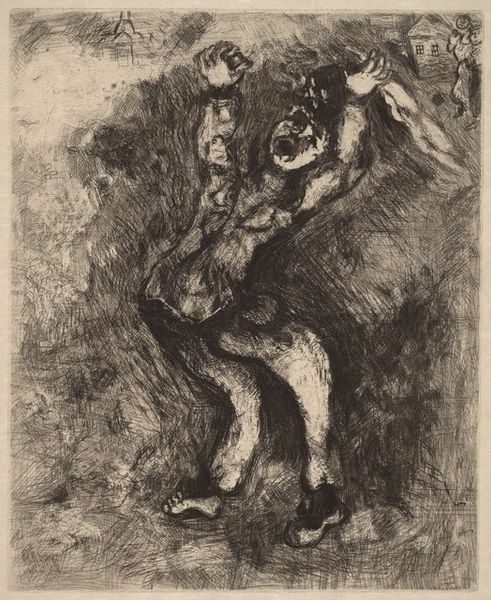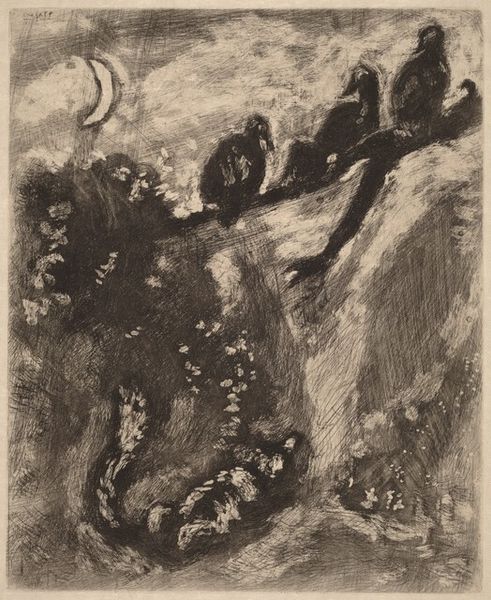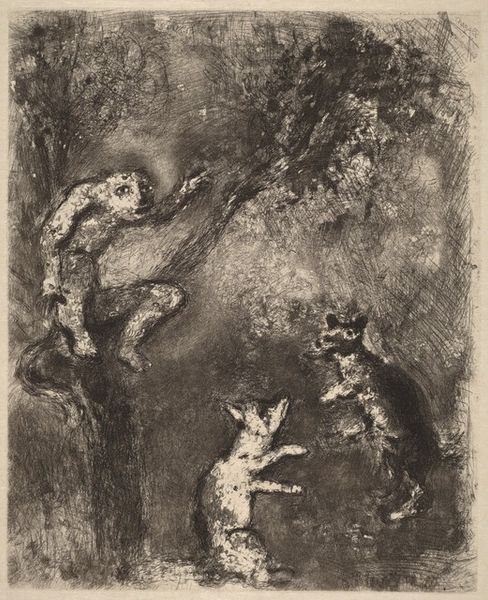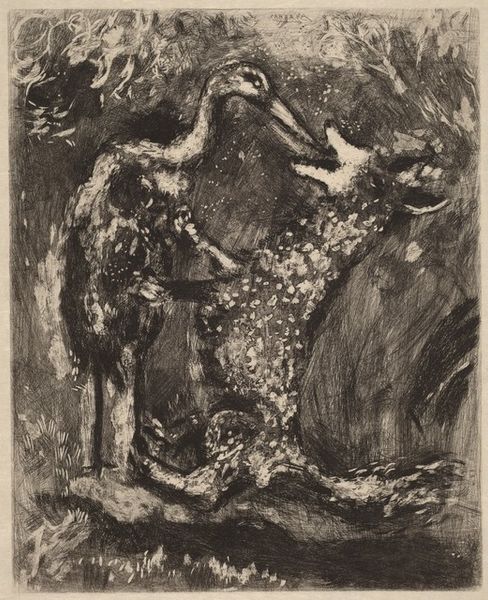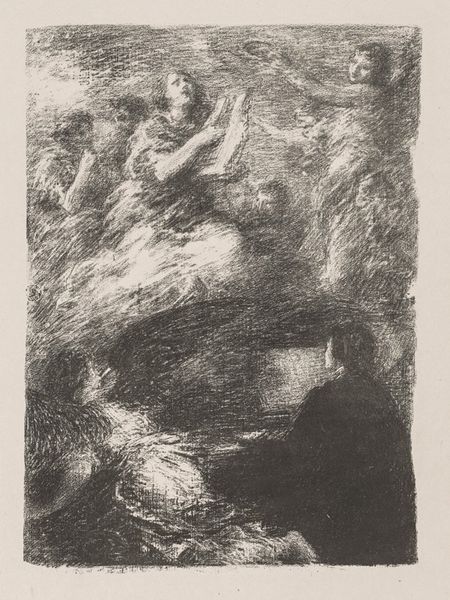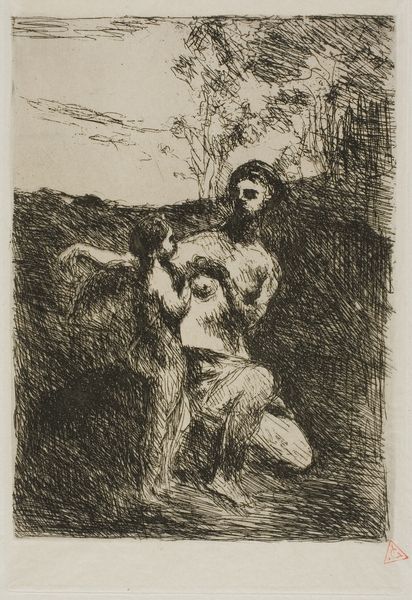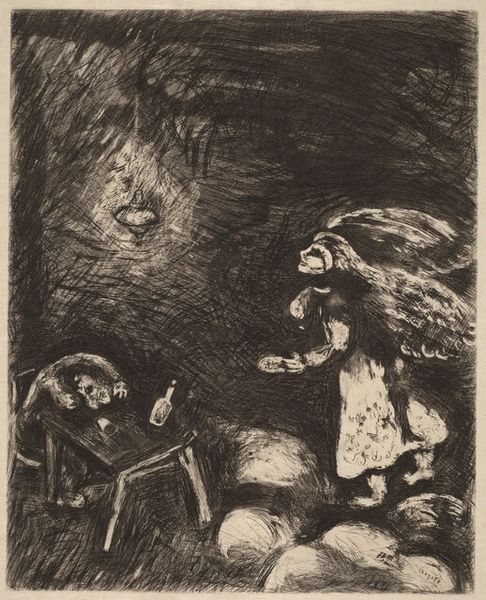
print, etching
#
narrative-art
# print
#
etching
#
landscape
#
charcoal drawing
#
figuration
#
pencil drawing
Dimensions: plate: 29.5 x 24 cm (11 5/8 x 9 7/16 in.) sheet: 38 x 28.2 cm (14 15/16 x 11 1/8 in.)
Copyright: National Gallery of Art: CC0 1.0
Curator: It has a shadowy quality, doesn’t it? This piece, made between 1927 and 1930, is an etching by Marc Chagall called "The Hen with the Golden Eggs." Editor: The swirling texture gives it an unsettling, almost dreamlike feel, despite the fairytale subject matter. There’s an undercurrent of darkness. Curator: Look at the texture, the clear manipulation of the metal plate; the controlled, dark application contrasts with sections that are incredibly light. What can we deduce about his technical process? Was it experimentation, material constraints, or did this result simply come from tools available to him? Editor: Given that it’s "The Hen with the Golden Eggs", a tale of greed and its consequences, that shadow could signify the darker side of human ambition. And of course the figure of the small child, maybe representing youthful innocence encountering something much bigger, more dangerous. There’s a social critique here, I think. Curator: Consider the state of interwar Europe, as the print was produced. The consumption, production and trade cycles must have been in turmoil. Editor: Yes, I think it's more than just illustrating a children's story. It’s rooted in anxieties around social mobility and morality, which perhaps can be explored via gender and race issues too. Who benefits, and at whose expense, from the hen’s labour? Curator: Do we know whether he editioned this etching, how many, for example, were produced, how they were disseminated. I think questions of production are absolutely key here. How were these prints originally distributed and consumed? Was it targeted for a popular audience? Was it made available via an art dealer network? Editor: The child is also at risk by confronting a kind of magical beast, potentially drawing out themes related to trauma, which for many Jewish artists such as Chagall may speak to the anxiety related to war, and persecution of groups that include Jews, disabled and queer individuals during that historical period. Curator: Thinking about what you say, this small printed edition had to be both financially and symbolically accessible at this period. But at the same time this etching also signifies how artists engaged directly with printmaking and how it expanded what might count as art in those days. Editor: Absolutely, seeing it that way also helps connect the history in it, as the image resonates with present concerns about capitalist excess. Curator: Indeed. Focusing on materiality and output makes this fairy tale print suddenly less whimsical and a lot more politically grounded in process and production. Editor: Examining this narrative through an intersectional lens, with an understanding of its historical framework, definitely deepens the meaning and its relevance.
Comments
No comments
Be the first to comment and join the conversation on the ultimate creative platform.
